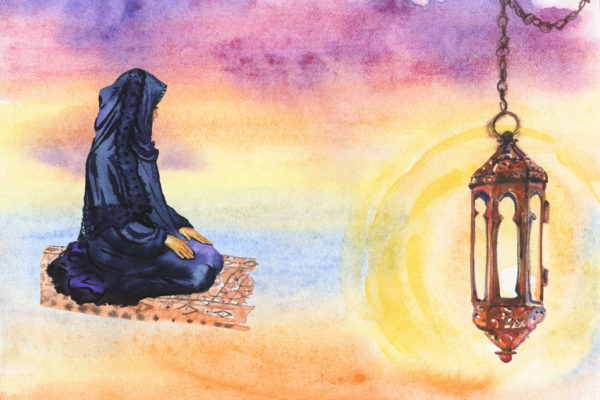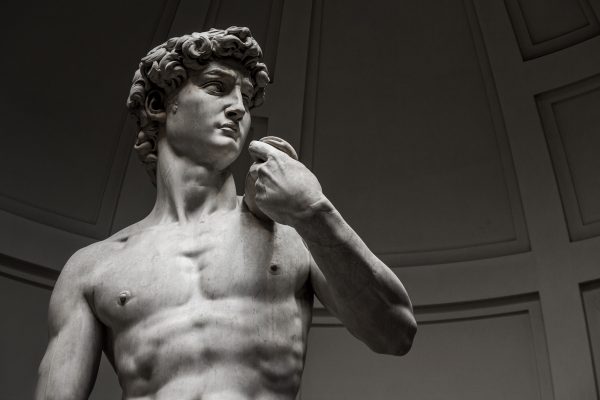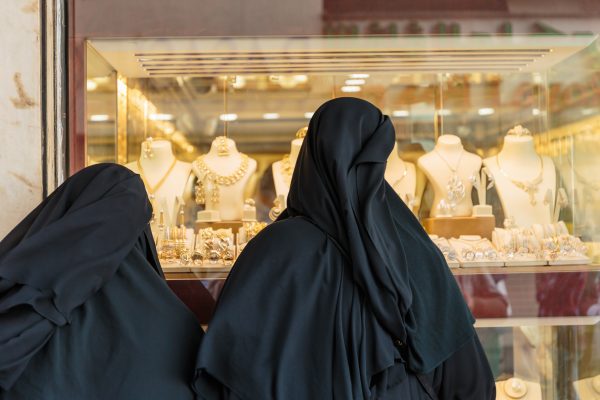The rebranding of Muslim femininity as beautiful, empowered and entrepreneurial can be seen as a postfeminist class project that hyper-counters Islamophobic stereotypes.
The rebranding of Muslim femininity as beautiful, empowered and entrepreneurial can be seen as a postfeminist class project that hyper-counters Islamophobic stereotypes.
The stereotypical ways in which Muslims are represented in mainstream media has been the object of many studies (Said, 1978; Poole, 2002; Zine, 2002; Razack, 2004). However, with the widespread use of social media, an empowering shift has taken place whereby young Muslim women create their own representations, become role models to peers, and pursue careers in content creation.
Some of the most visible and successful Muslim women online are hijab fashion bloggers (modest fashion influencers). Hijab fashion allows women to wear the headscarf in a modern, hip and confident way (Lewis, 2013; Moors, 2013; Tarlo, 2013). In line with this, blogger/entrepreneur Melanie El Turk states: “We founded HauteHijab […] to empower and instil self-confidence in hijab-wearing women worldwide.”
Bloggers, journalists and researchers celebrate hijab fashion as an empowering phenomenon because of its potential to counter Islamophobia: arguably “a deeper understanding of Muslim women’s clothing can challenge popular stereotypes about Islam.” Although I appreciate that fashion creates awareness, visibility, communities and economies, the linking of beauty/hipness with social inclusion/emancipation is problematic, according to feminist and postcolonial literature, for a number of reasons (Moors, 2009: 175-176).
It firstly raises questions about the actual impact fashion has when fighting Islamophobia. It shows a misunderstanding or denial of the structural and pervasive nature of Islamophobia; of the extent to which consumerism homogenises Muslim women into narrow identity boxes in which many do not fit (Gökariksel and McLarney, 2010); and of the meritocratic roots of this idea (Littler, 2017). According to meritocratic narratives, such as the American Dream, anyone can become successful through ambition, hard work and self-transformation. If people do not succeed, they are individually to blame, instead of structural inequalities and policies.
This narrative is often upheld in hijab fashion. Blogger Leena (@withloveleena) trivialises Islamophobia and turns her gaze inwards by making it an issue of self-confidence and ambition: “As a Muslim American, it was really difficult for me when I made the decision to start wearing a hijab. […] After a while, I realised that all of the negativity I was feeling was all in myself. […] I knew that hijab wasn’t going to stop me from doing everything I wanted to do in my life […] I am confident.”
To attract brands for collaborations, displaying this kind of motivational and entrepreneurial femininity means having to leave religion, politics, and digital labour exploitation out of the picture (Duffy and Hund, 2015; Jarrett, 2014; Elias, Gill and Scharff, 2017). In my PhD research, I have found that this display of success and glamour can be interpreted as a neo-liberal class project that privileges upper-middle class norms (McRobbie, 2013; Adamson and Salmenniemi, 2017). It is questionable whether this can be called empowering for Muslim women as a whole. Rather, it seems to play into a dichotomy of the ‘good’ (integrated) vs. the ‘bad’ (radicalised) immigrant discourse or an ‘acceptable’ Islam vs. ‘unacceptable’ Islam (Rigouste, 2005; De Koning, 2019).
Secondly, if women have to look good or brand themselves as stylish, before gaining visibility, being accepted in consumer markets, or have their legal rights acknowledged, it shows the conditional and sexist nature of Islamophobic mechanisms. Generally speaking, it would not be empowering (emancipatory) to resist Islamophobic pressures by increasing the pressure to live up to hyper-feminine beauty standards. London-based writer Nesrine Malik paints the picture: “The grotesque prejudice and violence against Muslims has created a counter push where only positive, stylized, aspirational, attractive, overly feminized, bourgeoisie Islam has flooded the zone.”
The Muslim women I have interviewed reported that, although makeup and fashion enhance their self-confidence, too much exposure to beauty images on Instagram can exacerbate women’s insecurities. However, in bloggers’ rebranding of Muslim femininity, beauty is central because, arguably, “mastering ‘the art of femininity’ will allow them upward mobility in a context where channels for mobility are increasingly constrained” (Adamson and Salmenniemi, 2017). Perceived as such, hijab fashion becomes less about style and positive self-representations, and more about social acceptance, respectability politics, functioning in the attention economy and hyper-countering Islamophobia (Kaw, 2002; Cvajner, 2011; Iton, 2008; Marwick, 2015; Suleiman, 2017).
Lastly, one can critically analyse statements about the empowering potential of hijab fashion by asking what definitions of empowerment and feminism are used in bloggers’ posts. Definitions can, for instance, be rooted in fourth-wave feminism, postfeminism or femvertising. In my case study of hijab fashion on Instagram, I have come across many popular feminist representations: girl power, badass lady bosses, mumpreneurs, Black power, body positivity and more. But I have also found representations that reproduce power inequalities, depoliticises feminism, and promotes mass-surveillance (Banet-Weiser, 2018; Thorpe et al, 2017). It is useful to analyse these representations intersectionally by exploring how gender interacts with sexuality, race, age, class, religion and consumerism, amongst others. The leading question thereby is: are these representations empowering in an inclusive, structural sense?
I have found that, in hijab fashion, many self-representations follow a postfeminist repertoire of free choice, empowerment, beauty, and consuming (Gill, 2008; McRobbie, 2009). For example, a blogger may assert that she wears a headscarf out of choice, that she feels beautiful in it and that it empowers her. I argue that, perhaps unknowingly, postfeminism is appealing to many Muslim women, because it offers a discourse that evades victimhood and specifically denies the stereotypes of Muslim women as lacking choice, being oppressed, radical or unfashionable (Baker, 2010).
Unfortunately, postfeminism often depoliticises empowerment/feminism. To illustrate: a discourse of ‘choice’ replaces a focus on human ‘rights’; it is not a woman’s choice that needs explaining/justification, but rather the right of women to wear a headscarf in secular countries needs defending in the presence of Islamophobic ideas and policies. In my next blog, I explain some definitions of postfeminism, why there is a tension between intersectional feminism and postfeminism, and how a postfeminist discourse impacts the emancipatory value of hijab fashion bloggers’ self-representations.
Sources
- Adamson, M., & Salmenniemi, S. (2017). ‘The bottom line is that the problem is you’: aesthetic labour, postfeminism and subjectivity in Russian self-help literature. In Aesthetic Labour, pp. 301-316. Palgrave Macmillan, London.
- Baker, J. (2010). Claiming volition and evading victimhood: Post-feminist obligations for young women. Feminism & Psychology, 20(2), 186-204.
- Banet-Weiser, S. (2018). Empowered: Popular feminism and popular misogyny. Duke University Press.
- Cvajner, M. (2011). Hyper-femininity as decency: Beauty, womanhood and respect in emigration. Ethnography, 12(3), 356-374.
- De Koning, M. (2019). A short history of ‘good’ and ‘bad’ Muslims in the Netherlands (Part 3): The management of Islam in the Dutch colonial empire. On: CLOSER research blog, 23 June 2019 https://religionresearch.org/closer/2019/06/23/a-short-history-of-good-and-bad-muslims-in-the-netherlands-part-3-the-management-of-islam-in-the-dutch-colonial-empire/.
- Duffy, B. E., & Hund, E. (2015). “Having it all” on social media: Entrepreneurial femininity and self-branding among fashion bloggers. Social Media+ Society, 1(2), 2056305115604337.
- Elias, A., Gill, R., & Scharff, C. (2017). Aesthetic labour: Beauty politics in neoliberalism. In Aesthetic labour (pp. 3-49). Palgrave Macmillan, London.
- Gill, R. (2008). Culture and subjectivity in neoliberal and postfeminist times. Subjectivity, 25(1), 432-445.
- Gökarıksel, B., & McLarney, E. (2010). Introduction: Muslim women, consumer capitalism, and the Islamic culture industry. Journal of Middle East Women’s Studies, 6(3), pp. 1-18.
- Iton, A. B. (2008). The ethics of the medical model in addressing the root causes of health disparities in local public health practice. Journal of Public Health Management and Practice, 14(4), pp. 335-339.
- Jarrett, K. (2014). The relevance of “women’s work” social reproduction and immaterial labor in digital media. Television & new media, 15(1), pp. 14-29.
- Kaw, 2002, cited in: Banet-Weiser, S., & Portwood-Stacer, L. (2006). ‘I just want to be me again!’ Beauty pageants, reality television and post-feminism. Feminist Theory, 7(2), 255-272.
- Lewis, R., & Moors, A. (2013). Modest fashion: Styling bodies, mediating faith. IB Taurus.
- Littler, J. (2017). Against meritocracy. Routledge, Oxon.
- Marwick, A. (2015). You May Know Me from YouTube. A Companion to Celebrity. Eds. Sean Redmond and P. David Marshall. Chichester: Wiley Blackwell, pp.333-349.
- McRobbie, A. (2009). The aftermath of feminism: Gender, culture and social change. Sage.
- McRobbie, A. (2013). Feminism, the family and the new ‘mediated’ maternalism. New Formations, 80(80), pp. 119-137.
- Moors, A. (2009). Islamic fashion in Europe: Religious conviction, aesthetic style, and creative comsumption. Encounters, 1(1), pp. 175-201. See also: Moors, A. (2009). The Dutch and the face‐veil: The politics of discomfort. Social Anthropology, 17(4), p. 403.
- Moors, A. (2013). ‘Discover the beauty of modesty’: Islamic fashion online. In: Modest fashion: styling bodies, mediating faith, IB Taurus, pp. 17-40.
- Poole, E. (2002). Reporting Islam: Media Representations of British Muslims. Bloomsbury Publishing.
- Razack, S. H. (2004). Imperilled Muslim women, dangerous Muslim men and civilised Europeans: Legal and social responses to forced marriages. Feminist legal studies, 12(2), 129-174.
- Rigouste, 2005, cited in: Navarro, L. (2010). Islamophobia and sexism: Muslim women in the western mass media. Human Architecture: Journal of the Sociology of Self-Knowledge, 8(2), 10, p. 105.
- Said, E. (1978). Orientalism. Routledge & Kegan Paul Ltd, London.
- Suleiman, O. (2017). Internalized Islamophobia: Exploring the Faith and Identity Crisis of American Muslim youth. Islamophobia Studies Journal, 4(1), pp. 1-12.
- Tarlo, E. (2013). ‘Meeting through Modesty: Jewish-Muslim Encounters in the Internet’. In: Modest fashion: styling bodies, mediating faith, IB Taurus, pp. 67-90.
- Thorpe, H., Toffoletti, K., & Bruce, T. (2017). Sportswomen and social media: Bringing third-wave feminism, postfeminism, and neoliberal feminism into conversation. Journal of Sport and Social Issues, 41(5), 359-383.
- Zine, J. (2002). Muslim women and the politics of representation. American Journal of Islamic Social Sciences, 19(4), 1-22.





